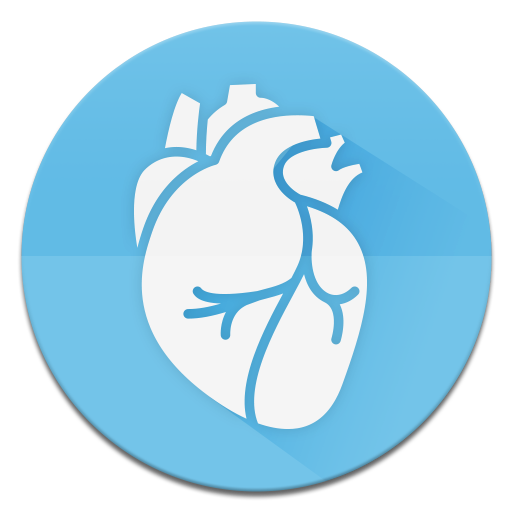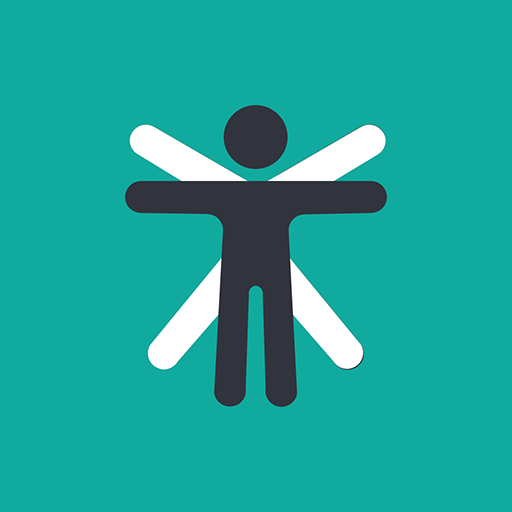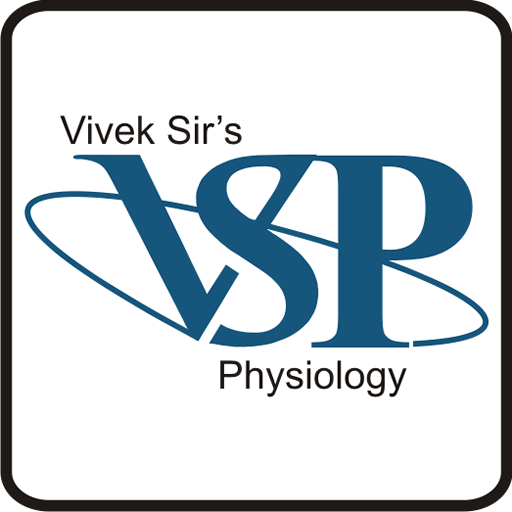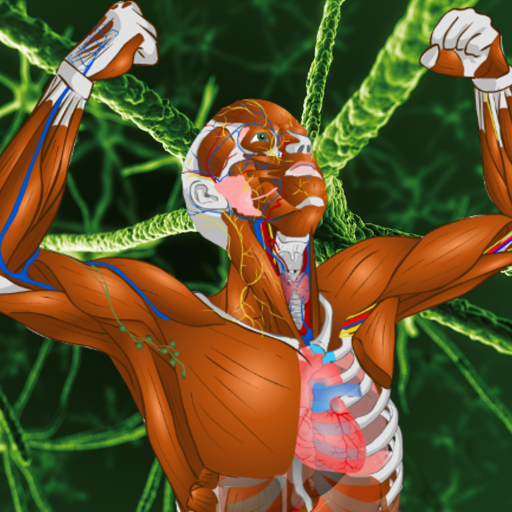

Anatomy & Physiology
Educational | Open Education
在電腦上使用BlueStacks –受到5億以上的遊戲玩家所信任的Android遊戲平台。
Play Anatomy & Physiology on PC
Human Anatomy and Physiology is designed for the two-semester anatomy and physiology course taken by life science and allied health students.
The app follows the scope and sequence of most Human Anatomy and Physiology courses, and its coverage and organization were informed by hundreds of instructors who teach the course.
The artwork for this app is aimed focusing student learning through a powerful blend of traditional depictions and instructional innovations.
Color is used sparingly, to emphasize the most important aspects of any given illustration. Significant use of micrographs from the University of Michigan complement the illustrations, and provide the students with a meaningful alternate depiction of each concept.
Finally, enrichment elements provide relevance and deeper context for students, particularly in the areas of health, disease, and information relevant to their intended careers.
Features:
- Study progress
- Quiz progress
- 6 Study units
- 197 Lessons
- 28 Quizzes
- 714 Practice questions
- 370 Flashcards
- 3187 Glossaries
Unit 1: Levels of Organization
Chapters 1–4 provide students with a basic understanding of human anatomy and physiology, including its language, the levels of organization, and the basics of chemistry and cell biology. These chapters provide a foundation for the further study of the body. They also focus particularly on how the body’s regions, important chemicals, and cells maintain homeostasis.
Chapter 1 An Introduction to the Human Body
Chapter 2 The Chemical Level of Organization
Chapter 3 The Cellular Level of Organization
Chapter 4 The Tissue Level of Organization
Unit 2: Support and Movement
In Chapters 5–11, students explore the skin, the largest organ of the body, and examine the body’s skeletal and muscular systems, following a traditional sequence of topics. This unit is the first to walk students through specific systems of the body, and as it does so, it maintains a focus on homeostasis as well as those diseases and conditions that can disrupt it.
Chapter 5 The Integumentary System
Chapter 6 Bone and Skeletal Tissue
Chapter 7 The Axial Skeleton
Chapter 8 The Appendicular Skeleton
Chapter 9 Joints
Chapter 10 Muscle Tissue
Chapter 11 The Muscular System
Unit 3: Regulation, Integration, and Control
Chapters 12–17 help students answer questions about nervous and endocrine system control and regulation. In a break with the traditional sequence of topics, the special senses are integrated into the chapter on the somatic nervous system. The chapter on the neurological examination offers students a unique approach to understanding nervous system function using five simple but powerful diagnostic tests.
Chapter 12 Introduction to the Nervous System
Chapter 13 The Anatomy of the Nervous System
Chapter 14 The Somatic Nervous System
Chapter 15 The Autonomic Nervous System
Chapter 16 The Neurological Exam
Chapter 17 The Endocrine System
Unit 4: Fluids and Transport
In Chapters 18–21, students examine the principal means of transport for materials needed to support the human body, regulate its internal environment, and provide protection.
Chapter 18 Blood
Chapter 19 The Cardiovascular System: The Heart
Chapter 20 The Cardiovascular System: Blood Vessels and Circulation
Chapter 21 The Lymphatic System and Immunity
Unit 5: Energy, Maintenance, and Environmental Exchange
In Chapters 22–26, students discover the interaction between body systems and the outside environment for the exchange of materials, the capture of energy, the release of waste, and the overall maintenance of the internal systems that regulate the exchange. The explanations and illustrations are particularly focused on how structure relates to function.
Chapter 22 The Respiratory
The app follows the scope and sequence of most Human Anatomy and Physiology courses, and its coverage and organization were informed by hundreds of instructors who teach the course.
The artwork for this app is aimed focusing student learning through a powerful blend of traditional depictions and instructional innovations.
Color is used sparingly, to emphasize the most important aspects of any given illustration. Significant use of micrographs from the University of Michigan complement the illustrations, and provide the students with a meaningful alternate depiction of each concept.
Finally, enrichment elements provide relevance and deeper context for students, particularly in the areas of health, disease, and information relevant to their intended careers.
Features:
- Study progress
- Quiz progress
- 6 Study units
- 197 Lessons
- 28 Quizzes
- 714 Practice questions
- 370 Flashcards
- 3187 Glossaries
Unit 1: Levels of Organization
Chapters 1–4 provide students with a basic understanding of human anatomy and physiology, including its language, the levels of organization, and the basics of chemistry and cell biology. These chapters provide a foundation for the further study of the body. They also focus particularly on how the body’s regions, important chemicals, and cells maintain homeostasis.
Chapter 1 An Introduction to the Human Body
Chapter 2 The Chemical Level of Organization
Chapter 3 The Cellular Level of Organization
Chapter 4 The Tissue Level of Organization
Unit 2: Support and Movement
In Chapters 5–11, students explore the skin, the largest organ of the body, and examine the body’s skeletal and muscular systems, following a traditional sequence of topics. This unit is the first to walk students through specific systems of the body, and as it does so, it maintains a focus on homeostasis as well as those diseases and conditions that can disrupt it.
Chapter 5 The Integumentary System
Chapter 6 Bone and Skeletal Tissue
Chapter 7 The Axial Skeleton
Chapter 8 The Appendicular Skeleton
Chapter 9 Joints
Chapter 10 Muscle Tissue
Chapter 11 The Muscular System
Unit 3: Regulation, Integration, and Control
Chapters 12–17 help students answer questions about nervous and endocrine system control and regulation. In a break with the traditional sequence of topics, the special senses are integrated into the chapter on the somatic nervous system. The chapter on the neurological examination offers students a unique approach to understanding nervous system function using five simple but powerful diagnostic tests.
Chapter 12 Introduction to the Nervous System
Chapter 13 The Anatomy of the Nervous System
Chapter 14 The Somatic Nervous System
Chapter 15 The Autonomic Nervous System
Chapter 16 The Neurological Exam
Chapter 17 The Endocrine System
Unit 4: Fluids and Transport
In Chapters 18–21, students examine the principal means of transport for materials needed to support the human body, regulate its internal environment, and provide protection.
Chapter 18 Blood
Chapter 19 The Cardiovascular System: The Heart
Chapter 20 The Cardiovascular System: Blood Vessels and Circulation
Chapter 21 The Lymphatic System and Immunity
Unit 5: Energy, Maintenance, and Environmental Exchange
In Chapters 22–26, students discover the interaction between body systems and the outside environment for the exchange of materials, the capture of energy, the release of waste, and the overall maintenance of the internal systems that regulate the exchange. The explanations and illustrations are particularly focused on how structure relates to function.
Chapter 22 The Respiratory
在電腦上遊玩Anatomy & Physiology . 輕易上手.
-
在您的電腦上下載並安裝BlueStacks
-
完成Google登入後即可訪問Play商店,或等你需要訪問Play商店十再登入
-
在右上角的搜索欄中尋找 Anatomy & Physiology
-
點擊以從搜索結果中安裝 Anatomy & Physiology
-
完成Google登入(如果您跳過了步驟2),以安裝 Anatomy & Physiology
-
在首頁畫面中點擊 Anatomy & Physiology 圖標來啟動遊戲



